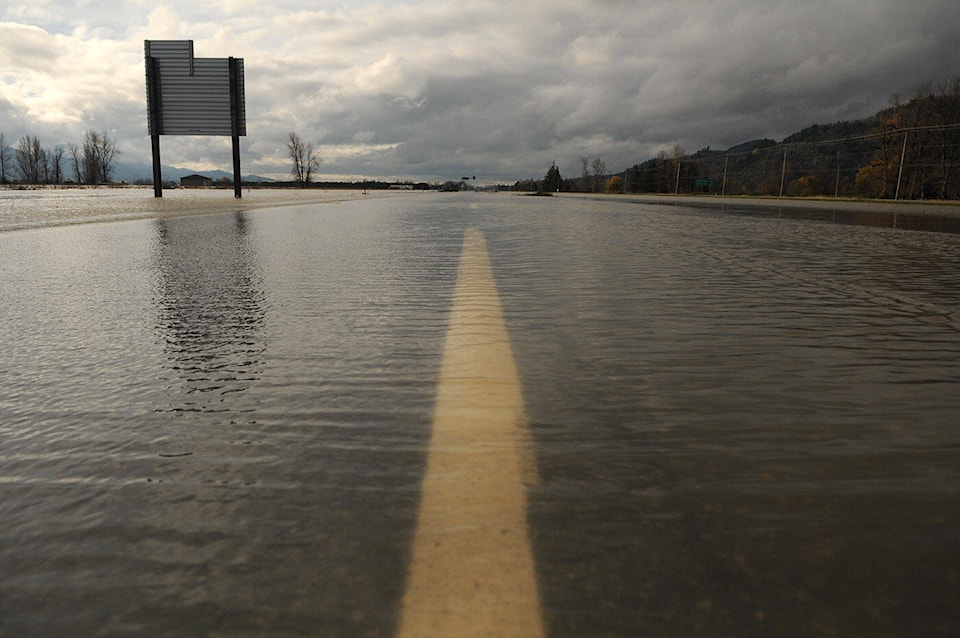The leaders of 58 groups and organizations are working toward a flood-management action plan for the Lower Fraser River with an emphasis on resilience.
They gathered for the Lower Fraser Floodplains Coalition Forum held at The’í:tselíya S.A.Y Health and Community Centre on Sq’ewqeyl territory in Chilliwack on June 9. In attendance were First Nations, local government and provincial leaders, as well as federal and provincial agencies, farm associations and other stakeholders establishing the groundwork for a joint action plan.
“The goal of the forum was to build relationships across the governments and agencies that deal with flood management,” said Tyrone McNeil, chair of Emergency Planning Secretariat, who is tribal chief of Stó:lō Tribal Council.
No one else is bringing together such diverse groups and leaders to have this discussion.
“We are building this from the ground up,” McNeil said.
Those in “high-risk flood zones” like the lower Fraser need to become keenly aware of the implications, he argued, and that means actively planning for it.
So the education aspect of regional flood management, is going to be especially critical, McNeil said.
The Lower Fraser Floodplains Coalition, previously known as the ‘Build Back Better Together Collaborative’ saw B.C. groups and experts at this year’s forum building on this work that started last July, said McNeil, who co-chaired the event with Chilliwack city councillor and Fraser Valley Regional District board chair, Jason Lum.
The day-long event earlier this month accomplished three things, McNeil stressed.
“One was educating folks on the necessity to adapt to climate change, preferably in a resilient fashion,” McNeil said.
“Second was educating people about the Sendai principles, and third was education on the appropriate implementation of key articles of the UNDRIP declaration.”
So in the end what did the forum come up with? Priorities like critical infrastructure and services, restoration and recovery of the Fraser River and floodplain, and food security.
“We worked to identify what’s working, and to tailor new provincial initiatives to support the work that needs to happen in our region,” McNeil said.
Lum said the process of prioritizing what they have in common was crucial.
“This work moves slowly, certainly slower than most people would like, but it’s important to get it right,” Lum said. “That means taking the time to ensure all of the stakeholders who want to be part of collaborative effort are represented, and have an opportunity to provide input.”
The June 9 forum was interesting, Lum said, in that it started to break down groups into subregional tables where participants were listing priority areas and projects in their own regions for immediate action.
“What I hope is the outcome of all this work is that we look across all the different initiatives and interests, and find areas for action in common, and that we start to undertake that work,” Lum.
In some ways that process is more important than competing for funding, he said, being able to focus on shared interests like better protecting our communities, the environment, critical infrastructure, and keystone species like salmon.
“There was a lot of support for that during the forum,” Lum commented. “But to do that we are going to need significant and ongoing funding from the province and the federal government.”
The forum work supports the more than 30 First Nations communities working on Hilekw Sq’eq’o, a Regional Action Plan for Mainland Coast Salish First Nations, with the aim of achieving resilience by implementing the ‘priorities for action’ in the Sendai Framework, blending Indigenous science and worldviews with worldwide best practices.
They’ll be looking to incorporate some international ideas from the four pillars of the Sendai Framework for Disaster Risk Reduction, McNeil said. It says that better emergency response planning can lead to fewer disaster risks and losses, mortalities, and impacts on economic, physical, social and environmental fronts. The Sendai agreement uses a holistic approach, from understanding disaster risk, to strengthening disaster-risk governance, and investing in emergency preparedness and disaster-risk reduction. It’s planning in a way that allows for the “build back better” principle, better response, rehabilitation, and resilience.
RELATED: Planning must take climate change into account
RELATED: Flooding would devastate Chilliwack, First Nations
Do you have something to add to this story, or a news tip? Email:
jennifer.feinberg@theprogress.com
@CHWKjourno
Like us on Facebook and follow us on Twitter.
